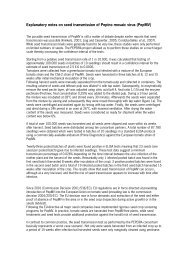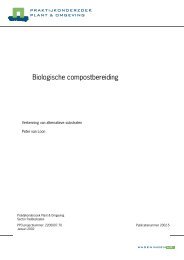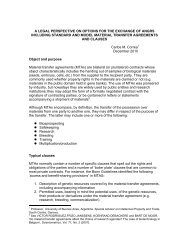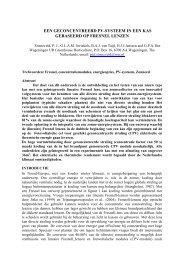Oil spill dispersant article
Oil spill dispersant article
Oil spill dispersant article
Create successful ePaper yourself
Turn your PDF publications into a flip-book with our unique Google optimized e-Paper software.
WHAT DISPERSANTS CAN AND CANNOT DO<br />
Dispersants are effective on the majority of<br />
crude oils, particularly if they are used as soon<br />
as possible after the oil has been <strong>spill</strong>ed, but<br />
they have some limitations. The changes in oil<br />
composition and physical properties, caused<br />
by the loss of more volatile components from<br />
the oil by evaporation and the formation of<br />
emulsion (collectively known as oil “weathering”),<br />
may decrease the effectiveness of <strong>dispersant</strong>s<br />
with time. These changes depends<br />
highly on oil composition and the prevailing<br />
temperature, wind speed and sea conditions.<br />
Since the 1980s, several well-documented field<br />
tests have been conducted in several countries,<br />
including Canada, France, Norway, USA<br />
and the UK. UVF (Ultra Violet Fluorometry)<br />
has been used to measure the dispersed<br />
oil concentrations in the water beneath and<br />
around test slicks sprayed with <strong>dispersant</strong>.<br />
These comprehensive measurements, combined<br />
with surface sampling and extensive use<br />
of remote sensing from aircraft, have allowed<br />
a quantitative estimate to be made of the<br />
amount of oil dispersed with time. These fi eld<br />
trials have conclusively demonstrated that <strong>dispersant</strong>s<br />
can be very effective, that is, they<br />
have been successful in rapidly removing the<br />
majority of the volume of some crude oils<br />
from the sea surface, even when the crude oils<br />
have been on the sea for several days.<br />
Dispersants have been successfully used at<br />
real oil <strong>spill</strong>s on many occasions. The action<br />
of <strong>dispersant</strong>s is often visible as the formation<br />
of a light-brown or a grey plume or ‘cloud’, of<br />
dispersed oil in the water column (see fi gure<br />
below). Such observations are best made from<br />
aircraft. Dispersant treated oil will rapidly disperse,<br />
leaving only a thin film of oil sheen on<br />
the surface.<br />
While it can be fairly easy to observe <strong>dispersant</strong>s<br />
working on some occasions, the<br />
viewing conditions can make it more diffi cult<br />
on others. In poor visibility, it may not be<br />
possible to clearly observe dispersed oil in the<br />
water. Qualitative evidence of the dispersion<br />
of oil can be obtained by visual observation,<br />
Dispersant fi eld trials in the North Sea. Statfjord<br />
crude oil, weathered at sea for 3 hours.<br />
A) just prior <strong>dispersant</strong> treatment.<br />
B) 15 min after treatment (oil has started to dispersed<br />
into water clumn, a grey plume is created)<br />
while a quantitative estimate of <strong>dispersant</strong><br />
effectiveness at a real oil <strong>spill</strong> is much more<br />
diffi cult. It is also extremely diffi cult to make<br />
comprehensive measurements of sub-surface<br />
oil concentrations under very large oil slicks.<br />
The effects of natural dispersion and <strong>dispersant</strong><br />
spraying can be distinguished by measuring<br />
the oil concentrations a different depths.<br />
Dispersants cause higher dispersed oil concentrations<br />
at greater depths. UVF measurements<br />
showing a homogenous “plume”with a<br />
signifi cant increase in dispersed oil concentration<br />
at depths of 1 to 8 metres below the<br />
<strong>dispersant</strong> treated oil is a good indicator that<br />
the <strong>dispersant</strong> is working (see figure below).<br />
However, <strong>dispersant</strong>s do not work well in all<br />
circumstances. The specifi c physical and chemical<br />
interactions controlling <strong>dispersant</strong> effectiveness<br />
are complex. Many of the factors<br />
are inter-related and it is difficult to separate<br />
them completely, but the evidence from fi eld<br />
8

















